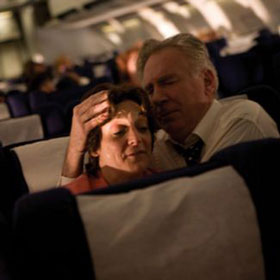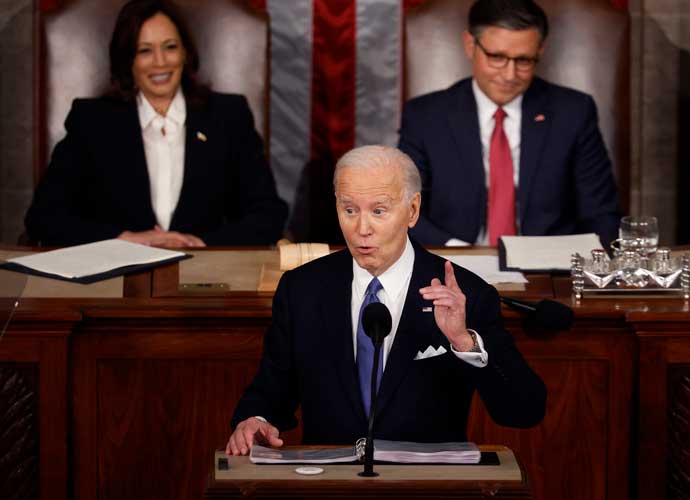United 93 Blu-ray

4.5/5
Upon it's initial release back in 2006 United 93 carried the distinction of being the first mainstream Hollywood film to take its story directly from the September 11th 2001 terrorist attacks. British writer/director Paul Greengrass unfolded the infamous events and laid them out in a real time narrative that takes us inside the FAA, the Boston and Cleveland control centers, and SAC NORAD to show what apparently happened as authorities tried to come to terms with the events of that day, along with how and why they were ultimately unable to do anything to stop them.
Given the extensive and lengthy investigative process that followed the attacks, in an attempt to find who if anyone was culpable, Greengrass had an unprecedented amount of data to sift through and draw from when writing United 93. Every single person remotely connected to that day has given lengthy depositions as to what they did, what they saw, what they weren't able to do, and why they weren't able to do it. Aside from a little creative license at the climax (recordings strongly indicate that the passengers on board United Airlines flight 93 did indeed revolt, but whether they actually made it inside the cockpit is still a matter of much debate), we can pretty much take the film at its word that this is as definitive a version of events, at least on the ground, as we are ever likely to get.
Greengrass also had the advantage that everyone already knows the major events of this story backwards and forwards, so he was free from the burden of including them. What he can instead concentrate on, and wisely does, is the little moments of human drama which are infinitely more powerful at this point than images of smoking skyscrapers we have all seen a hundred times on cable news and YouTube.
Using as many of the actual officials involved that day as he could and supplementing them with unknown actors, we can almost forget that this is a work of fiction. In fact there is next to nothing here that resembles a traditional narrative work. There are no characters here – no hero and no villain. Greengrass goes to great lengths to remove this story from any traditional narrative constraints. For example, none of the passengers are referred to at any point by name, as they would not have known one another. The “action” is limited to only the events that we know for certain would have happened – the mundane and the painfully normal. Events unfold in real time and allow the empty moments of banality that make up deceptively large portions of our lives to linger with a riveting sense of tension.
Knowing what is to come, the simple act of walking through an airport terminal flashing polite, empty smiles at staff and passers by and making small talk suddenly induce a sickening sense of dread. Couple this with the events in the control center when operators begin get their first clues that the events of the morning are far from routine, but obviously have no idea what is about to occur, and you feel a cold chill creep over you.
What becomes sadly very clear all too quickly is that the people in charge were completely unprepared for an attack that well planned and that quickly executed. Despite their best intentions, they simply lacked the tools necessary to respond. The control towers that had no authority reported to the FAA who had no clear strategy, who have to brief the military who don't have all the information, who then launch planes with no defined rules of engagement. All of this is somehow coordinated across a country spanning thousands of square miles, which at any time has approximately 5000 aircraft operating within its airspace.
Greengrass manages to cut back and fourth between different command centers, control towers and agencies, using actual dialog, appropriate terminology and jargon wherever possible to portray the absolute chaos of that morning. Everyone hit the panic button and people who desperately needed a clear head were bombarded from all sides with suspicions of potential hijacks, false alarms, constantly updated protocols, misinformation and no clear guidelines of how to operate.
The director's love for handheld camera work serves him beautifully for this story as it takes you right inside the events and gives you a sense of being on the shoulder of the people who were there. Knowing what we know, watching them run around blind in the dark with their hands tied becomes extremely painful. The sense of sickness as Boston tower tracks American Airlines Flight 11 as it descends rapidly over New York on its way to the north tower of the World Trade Center, before suddenly disappearing from radar leaving the tower mystified as to where it went, is excruciating.
Perhaps Greengrass’ greatest achievement with United 93 is its complete and total refusal to take a side. He simply documents everything; the events, the passengers, the hijackers and the people on the ground authentically and dramatically, without ever resorting to judgment or indictment of anyone at any time (the sniveling German passenger preaching appeasement to the highjackers is a single and forgivable misstep). Clearly there was plenty of blame to go around, but that is outside the realm of this film and its purpose. In a world saturated by emotionally loaded images, slanted propaganda and biased ideology, the noble intention of United 93 and its director was simply to offer a version of events that is both realistic and powerful, and in that it succeeded brilliantly.
Blu-ray Special Features:
Despite the timeliness of the release, there is nothing here relating to the 10th anniversary of the tragic event. All the extras are lifted as-is from the two disc edition of the DVD. Greengrass' commentary track remains engaging as he discusses his intentions with the project and the foundation of structured improvisation on which it is structured. Also included is a short film about the memorial dedicated to the passengers of the fateful flight. Additionally, there are two fifty-minute featurettes; Families and the Film talks with friends and relatives of the passengers and crew, while Chasing Planes is a more traditional documentary chronicling of the events of September 11, 2001.
RELATED ARTICLES
Get the most-revealing celebrity conversations with the uInterview podcast!







Leave a comment